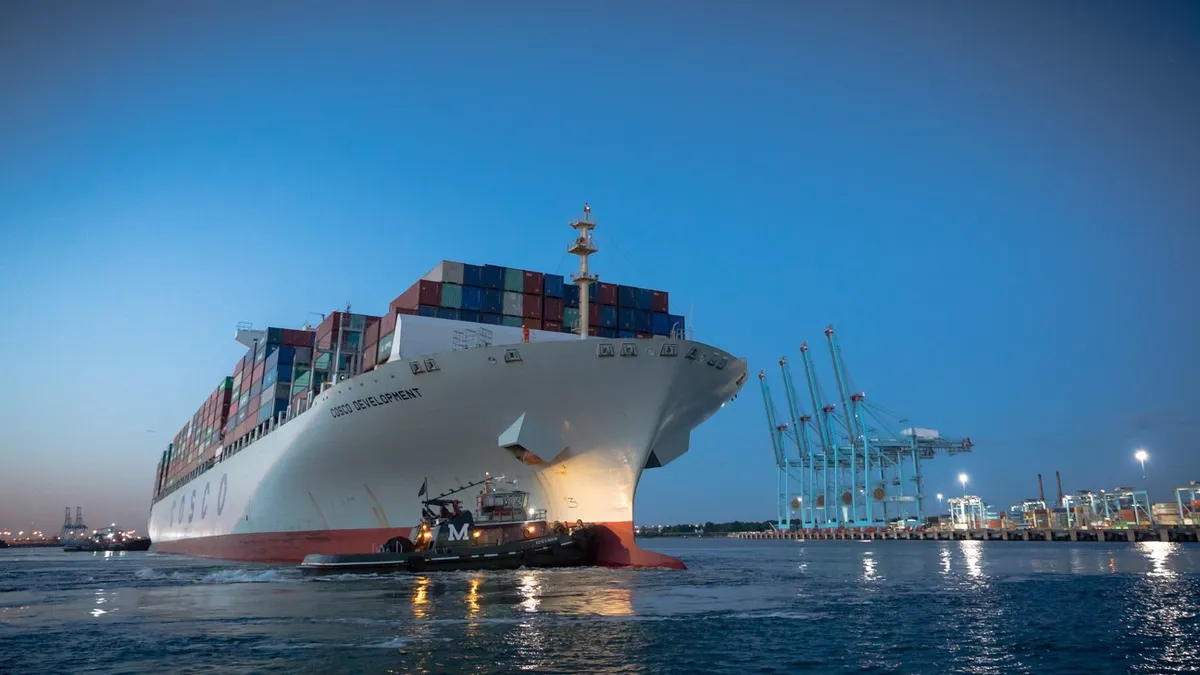Dive Brief:
- Container volumes at East Coast ports have increased nearly 47% since 2008 thanks in part to the expanded Panama Canal, completed in 2016, which allows larger ships to use the waterway to traverse from Asia to the United States East Coast, according to a new report from the real estate company JLL.
- These larger vessels have led to record volume at East Coast ports, but have also led to congestion issues, which some ports are looking to address by investing in rail connections and inland ports accessed by barge traffic, according to the report.
- "Given the rise of e-commerce and the fact that two-thirds of the U.S. population lives east of the Mississippi River, we expect to see continued strong demand for industrial real estate around key Eastern seaports," Walter Kemmsies, the managing director, economist and chief strategist for JLL's U.S. Ports, Airports and Global Infrastructure group, said in a press release emailed to Supply Chain Dive.
Dive Insight:
"Warehouse space around port terminals has already reached historically low vacancy levels and rent rate growth has exceeded 25 percent since 2010," Kemmsies said.
As Neopanamax ships have begun docking at East Coast ports, the containers they're carrying need to go somewhere, which has led to this increased rent.
Oakland, California, and Houston have seen some of the largest increases in industrial sector rent between 2010 and 2018.
This has also led to more construction and increased inventory, according to the report. The last decade has seen a steady trend of growth and lower vacancy for the industrial real estate sector. And while the sector has added more than 1 billion square feet of space in this time, "thanks to e-commerce growth the leasing momentum remains strong," the report said.
These new buildings will help to ease the rent increases going forward, JLL suggests.
One of the issues facing ports is the shortage of long haul truckers to move containers from the port to another destination. Some ports are turning to rail investment to help with this.
The JLL report points to projects by the Georgia Ports Authority, the Ports of Long Beach and Los Angeles, the Port of Miami and elsewhere where ports are investing in rail infrastructure to help to improve the flow of containers through their facilities.
Many of these ports are investing millions of dollars in these upgrades. New rail facilities at the Port of New York and New Jersey are part of a $600 million Port Authority capital investment program. And the Port of Long Beach is investing $870 million in its off-dock rail project.
As ports make these shifts to accommodate growth, it appears they're also planning for it to continue. The Port Authority of New York and New Jersey released its Port Master Plan 2050 earlier this month, listing eight "primary drivers" that helped shape the report. The top driver is preparing for increased container volume. "With container volumes projected to double or triple over the next 30-year time frame it is critical for the Port Authority to assess the location and distribution of future container capacity," the report reads.














